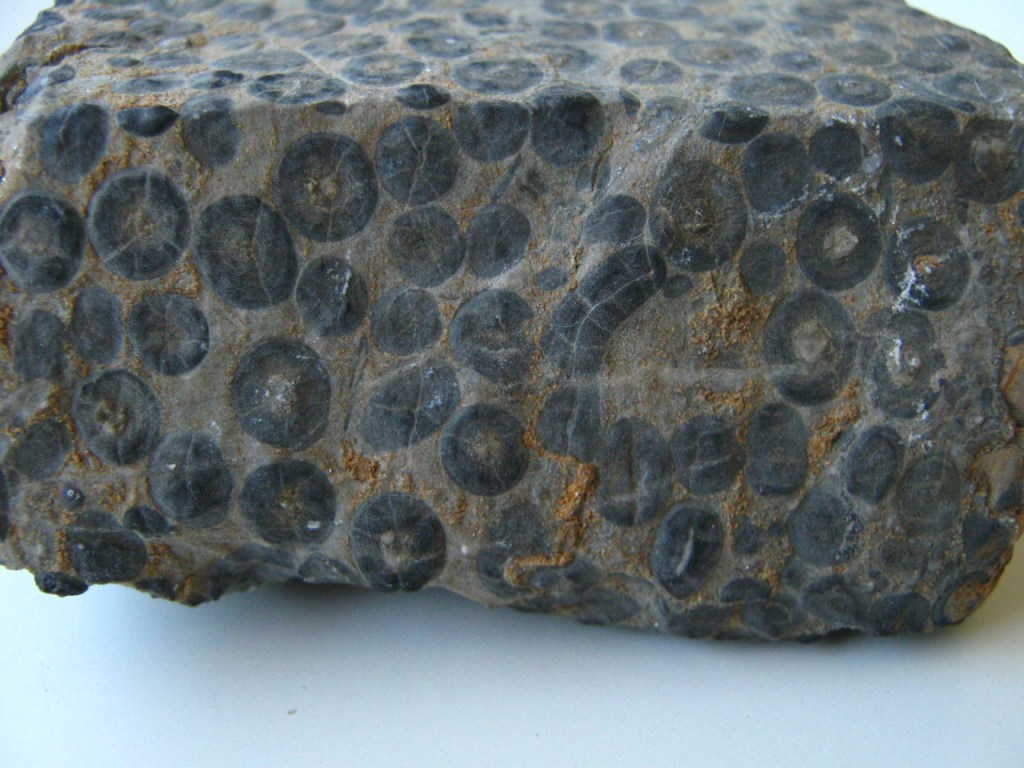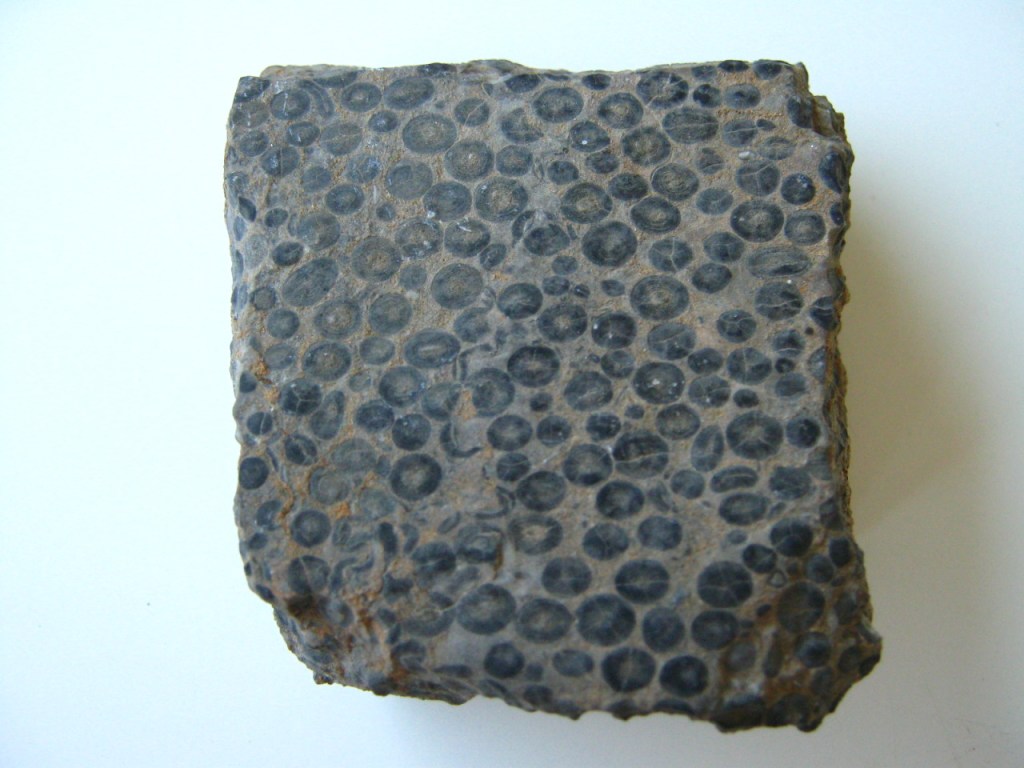While these dark gray spherical clasts could be mistaken for some type of fossil, they’re actually ooids, which are chemically precipitated sedimentary grains.
Ooids form around a nucleus of a mineral grain or shell fragment. Concentric layers composed of calcium carbonate precipitate out and progressively coat the nucleus, forming a pattern almost like tree rings. In the bottom right photo, you can clearly see the center nucleus and the individual surrounding concentric layers that compose the ooid.
Generally, ooids form in shallow wave-agitated water. These higher-energy marine settings allow for accretion to occur on all sides of the grain and for their well-polished appearance. However, ooids are also known to form in non-marine settings, such as the Great Salt Lake.
Grains that are less than 2 mm in diameter are termed ooids, while those larger than 2 mm are termed pisoids. Accordingly, ooids cemented together form the sedimentary rock oolite, and pisoids form the rock pisolite.
Specimens of unknown age from Banff, Alberta, Canada
All images by author




